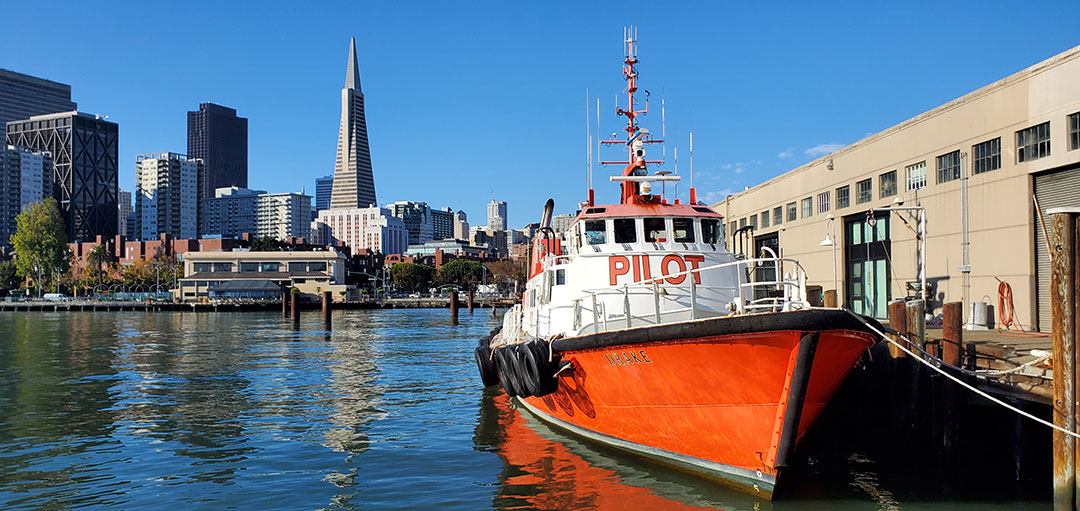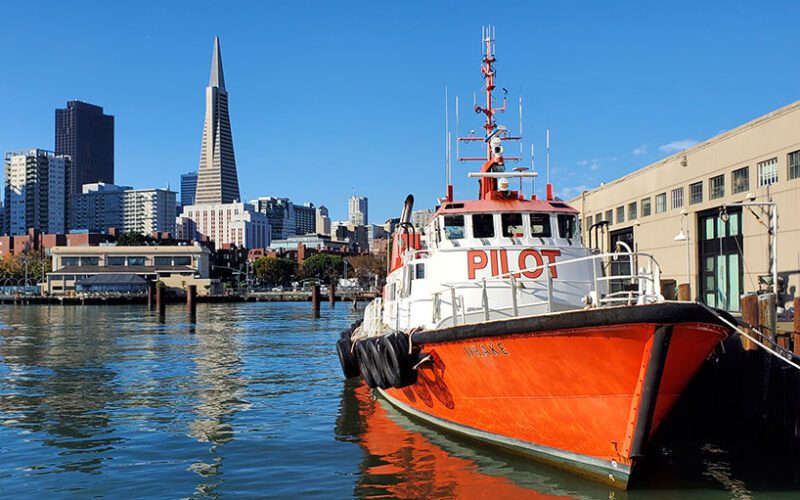
California’s maritime industry warned of dire consequences from new emissions regulations the state enacted last year. Those predictions are already coming true.
The San Francisco Bar Pilots have begun planning to replace their three 104-foot station boats due largely to challenges associated with retrofitting the vessels to meet the California Air Resources Board (CARB) regulations. Two of the station boats, California and San Francisco, were built around 2000 and are approaching the end of their lives. But the third, Drake, was built in 2009 and would otherwise have at least another decade in service.
The Pilots are working with naval architects at Glosten in Seattle on a design that potentially will include a hybrid propulsion system. The first deliveries are expected in late 2024.
“They are all CARB-ing out,” Capt. David McCloy, who is overseeing the group’s new construction efforts, said of the station vessels. “They won’t meet the CARB compliance when their timeline is up in the next few years, so we have to build new boats that meet the CARB rules.”
“It effects a ton of commercial operators,” McCloy added. “I think there is probably a reality check coming here sometime soon.”
CARB’s new emissions standards mandate that most tugboat and workboat operators within California transition to EPA Tier 3 and Tier 4 engines. These engines must also be equipped with diesel particulate filters (DPFs) that capture more particulate matter than is required by the federal Environmental Protection Agency.
Ferries that transit more than three miles also must meet the new rules, and so-called “short run” ferries will need to transition to zero-emission propulsion. Excursion boats will need to install hybrid propulsion systems.
The timelines for adopting these new powerplants varies. In most cases it must happen by 2030; in some cases it is much sooner.
The Bar Pilots three station boats operate some 12 miles out to sea for six days at a time. Each vessel delivers pilots to ships that are heading into San Francisco Bay, and retrieves pilots who have guided outbound vessels into the Pacific Ocean.
The vessels have a unique operating profile that creates challenges in choosing the right propulsion system. The pilots are working with Glosten on different hybrid and mechanical options. The CARB requirement to equip engines with a DPF is an ongoing concern.
“It is quite the challenge because there is a lack of equipment manufacturers that will meet the CARB regulations,” McCloy said, noting that few manufacturers meet the group’s requirements for propulsiuon.
Glosten contributed to the design of Drake along with designers at the former Marco Shipbuilding in Seattle. The Bar Pilots are hoping to keep much of the existing hull form, albeit with the new CARB-approved propulsion system.
Peter Soles, who works in marine operations and business development for Glosten, said naval architects are trying to give the pilots all the information on different propulsion so they can make an informed choice. That decision will inform the rest of the design for the new vessels.
“They like how the boat performed out there, and they are trying to keep as close as possible to the existing 104s,” Soles said.
Industry groups are not particularly optimistic about CARB issuing a reprieve to the new rules. However, the Bar Pilots are continuing their dialogue with the agency to make the case for flexibility as they try to comply with the rules.
“We have had a lot of talks with them,” McCloy said, “and we are going to have some more.”

